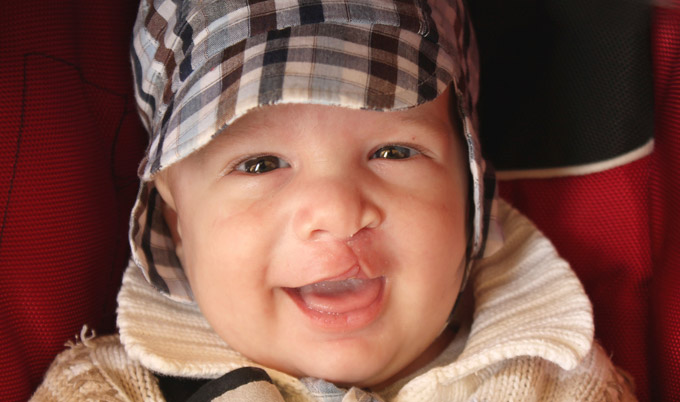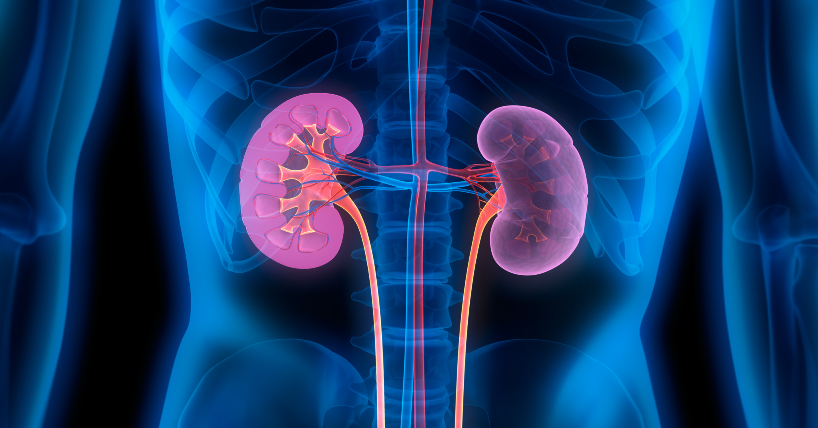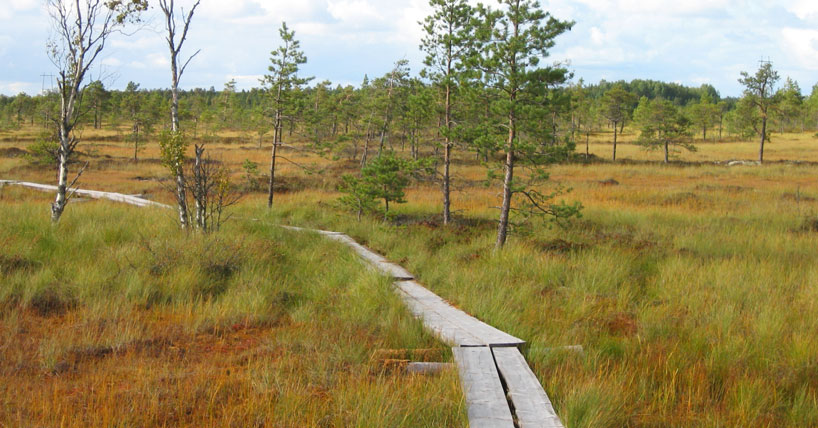Cleft lip and palate research
Breakthrough in cleft lip and palate research
Published on: 24 March 2016
Leading scientists have identified an important gene that is associated with cleft lip and palate.
Experts say the discovery is a step closer to understanding how this birth defect arises, and will help in the development of medical approaches to prevent the disfiguring condition.
An international team, led by Newcastle University and the University of Bonn in Germany, has found that variants near a gene called GREM1 (Gremlin1) significantly increase the risk for cleft lip and palate.
A cleft is a gap in the upper lip, the roof of the mouth, or sometimes both. Each year, approximately 250,000 babies worldwide are born with a cleft, equating to about two babies a day in the UK.
Dr Heiko Peters, who works at Newcastle University’s Institute of Genetic Medicine, is senior author of the research paper published in the journal, PLoS Genetics.
He said: “The findings reveal a link between GREM1 and specific clinical characteristics that arise in the formation of a cleft lip and palate.
“This is very important in this research area as it helps to decipher the complex interplay between genes required for the different steps and in different tissues during lip and palate development.
“A cleft lip can occur with or without a cleft palate and the genetic factors that predispose to palate involvement are largely unknown.”

The study
The research team carried out analyses on genetic and clinical data from three large patient cohorts and identified a strong association between a region on chromosome 15 and cleft lip and palate.
Experts carried out studies on mice to investigate where GREM1 is normally active in the development of the face and how alterations in the gene’s activity may affect the lip and palate.
Results indicate that it is not the loss of GREM1 function but rather its increased activity that causes the condition.
It is the second gene which has been shown to be linked to a condition in which a cleft of the lip and a cleft of the secondary palate occur together.
Dr Peters added: “These findings provide a framework for further analyses of GREM1 in human cell systems and model organisms, broadening our understanding of the processes that regulate the face’s shape.”
Cleft lip and palate
Although not life-threatening for patients with access to postnatal surgery, cleft lip and palate requires additional multidisciplinary care by specialists, including ear, nose and throat experts, orthodontists and speech therapists.
Children with the condition can have dental issues, speech problems and are at increased risk of serious ear infections and hearing loss.
Currently, scientists only have a fragmented picture about which genes are required for lip and palate development, and how environmental factors might interact with genetic risk factors.
To establish effective prevention strategies scientists must identify genetic risk factors and understand how gene-gene and gene-environment interactions interfere with lip and palate development.
As the use of personalised medicine increases, understanding how genetic changes alter foetal development will become increasingly relevant.
This is particularly important for conditions such as cleft lip and palate that appear to be caused by a combination of genetic and environmental factors, such as smoking or certain medicines used by the mother.
Future research
Further studies will focus on identifying genes and environmental factors that interact with GREM1.
Dr Laura Yates, consultant in clinical genetics at Newcastle upon Tyne Hospitals NHS Foundation Trust, said: “The families we meet in genetic clinics on a daily basis generally have two common questions.
“Firstly, what is the cause of the developmental anomaly affecting their child or themselves, and secondly, can it be treated or prevented in future pregnancies?
“Studies such as this contribute vital pieces of information that enable clinicians to provide patients with answers that are relevant to them and their family, not just general statistics.
“Our understanding of how genetic factors in both mother and foetus, and external or environmental influences impact on foetal development in the womb, is far from complete.
“This study takes us one step closer to being able to identify genetic changes that increase the chance of a particular form of cleft lip and palate re-occurring in a family, therefore to studying what can be done to reduce the chance of this happening in individuals who have this genetic change.”
Case study
Mother-of-five Joanne Brown knows first-hand the challenges faced by those with a cleft lip and palate.
The student nurse’s daughter, Emily, seven, was born with the condition and has had to undergo three operations so far with more expected in the years ahead.
Emily has coped well with her condition but having a cleft lip and palate has affected her speech and confidence.
Joanne, 33, of West Rainton, County Durham, who is married to David, 45, a joiner, welcomes the research into the condition.
She said: “I found out at my 20 week pregnancy scan that Emily had a cleft lip and palate. I was very upset as I didn’t know anything about the condition.
“Speech is a huge problem for Emily and she is shy around other children. She never used to look in the mirror and it has taken time for her to be able to do this.
“It’s so important that research is carried out as the condition is a lifelong problem for sufferers.
“This research is a significant step forward in understanding the condition. It would be phenomenal if, in the future, the chance of a cleft lip and palate occurring could be reduced.”
Reference
Meta-analysis reveals genome-wide significance at 15q13 for nonsyndromic clefting of both the lip and the palate, and functional analyses implicate GREM1 as a plausible causative gene
Kerstin U. Ludwig, Syeda Tasnim Ahmed, Anne C. Böhmer, Nasim Bahram Sangani, Sheryil Varghese, Johanna Klamt, Hannah Schuenke, Pinar Gültepe, Andrea Hofmann, Michele Rubini, Khalid Ahmed Aldhorae, Regine P. Steegers-Theunissen, Augusto Rojas-Martinez, Rudolf Reiter, Guntram Borck, Michael Knapp, Mitsushiro Nakatomi, Daniel Graf, Elisabeth Mangold, Heiko Peters
Published in PLoS Genetics. DOI: 10.1371/journal.pgen.1005914




